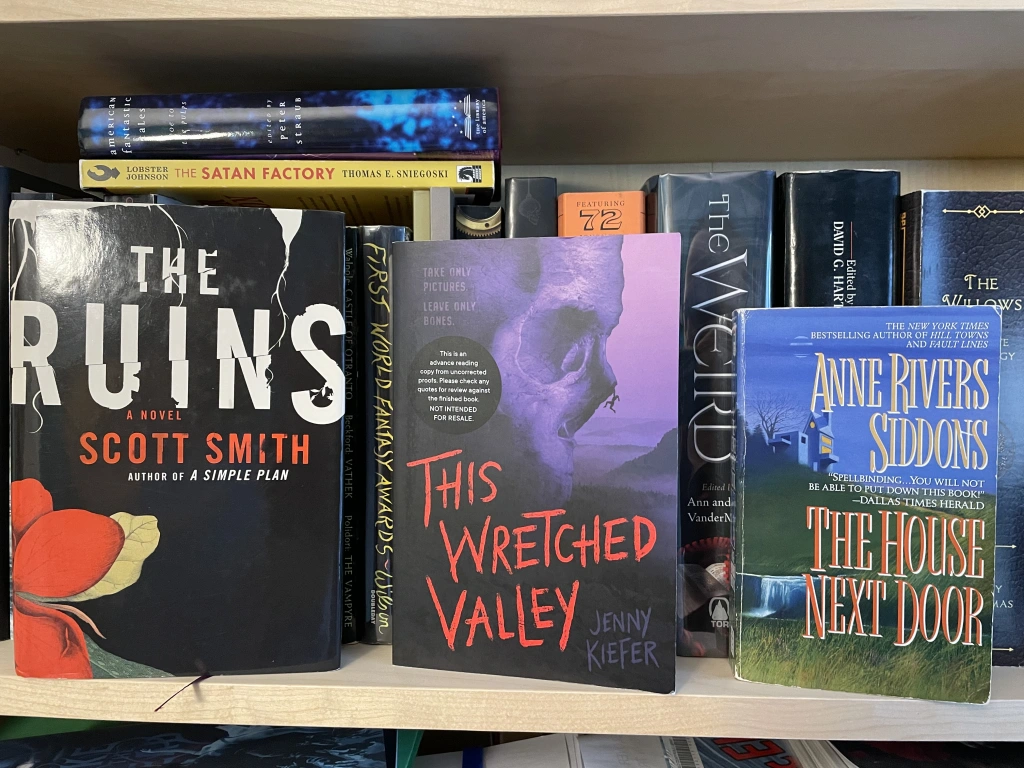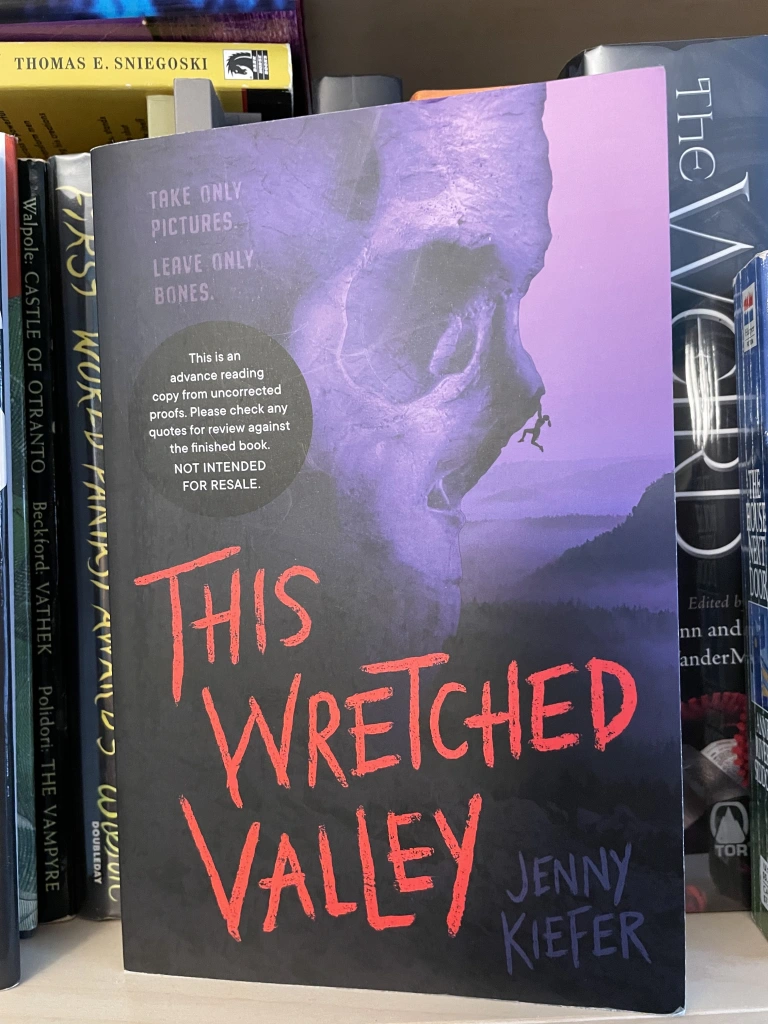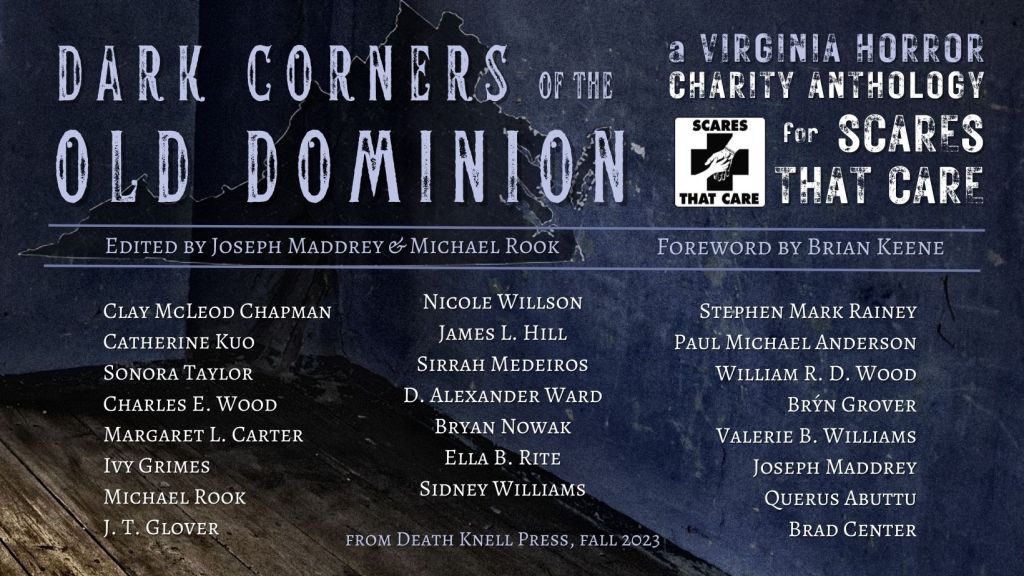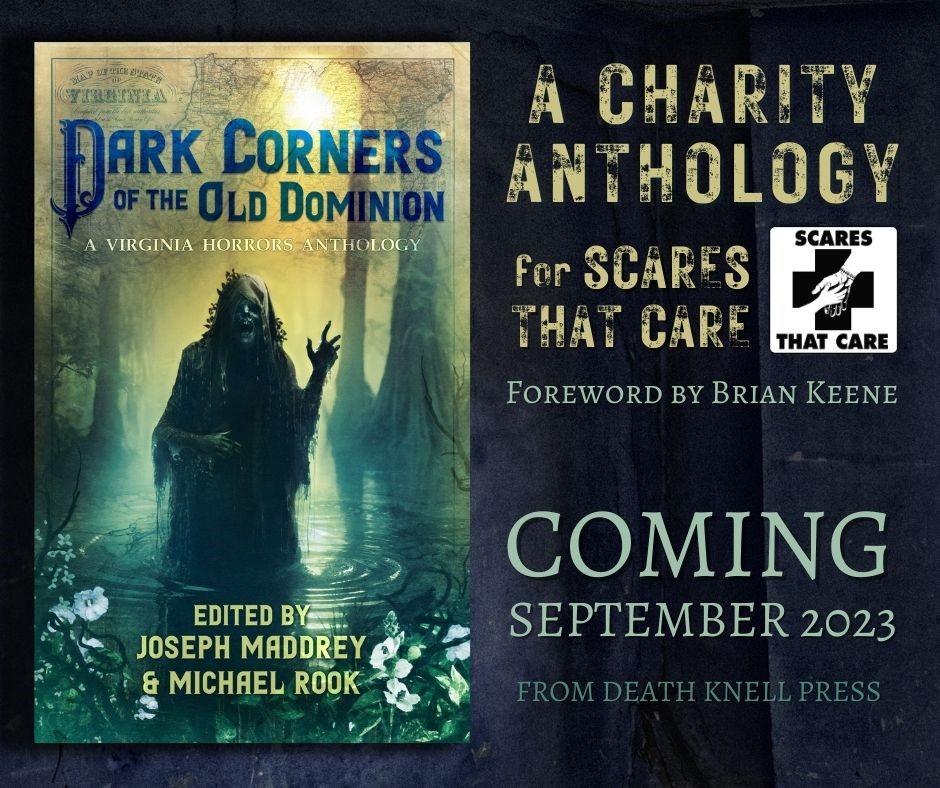
One of my favorite types of horror story is the Bad Place story. You know the one: a person or group of people encounter a place where evil’s plain baked into the ground. The evil might have started with a person, an event, an alien, a demon—but the protagonist’s encounter is strongly localized. “The Dead Valley,” “The Colour Out of Space,” The House Next Door, The Ruins, The Blair Witch Project, YellowBrickRoad, and more: all are stories of The Bad Place (not The Bad Place, though that also features a Bad Place).
Jenny Kiefer’s forthcoming This Wretched Valley [Amazon | B&N | Bookshop.org] is the latest addition to the list, and it’s a doozy, smart and fully aware of its literary and cinematic predecessors. The tale of a rock climbing trip gone wrong, the novel features many of the elements you know and love about horror stories set in the wilderness, but others come into play, too. Some of them are telegraphed clearly, some less so, and there were even a couple points I hit while reading where I thought to myself “huh, she actually did it”—by which I mean things I’ve seen other authors try and fail to execute in stories about the Bad Place. If I told you what those things were, it would spoil the fun of encountering them, but suffice it to say this was one of my favorite reads of the year, right up there with Silver Nitrate.
This book doesn’t stint on violence, body horror, creepiness, or pathos. The advance praise comparisons to work by Alma Katsu or standouts of the genre like The Ruins are well deserved. I enjoyed reading this book, enough so that I expect to re-read it, and I hope you’ll enjoy it, too.






